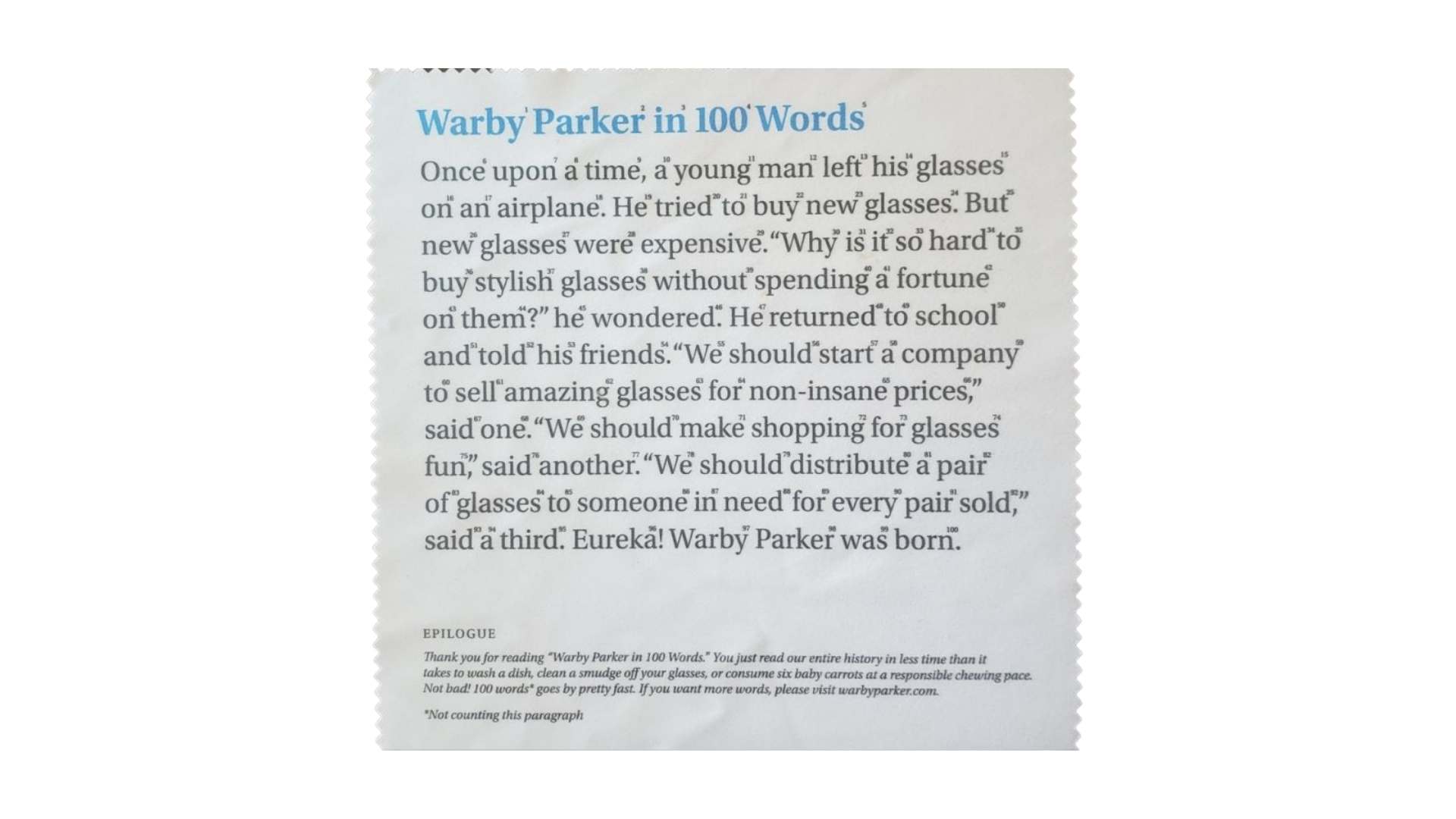Author: Aga Bajer
How to Craft Powerful Stories that Can Drive Culture Change There is an old adage that says: If you want to learn about a culture, listen to the stories. If you want to change a culture, change the stories. I had a first-hand experience with this very early on in my career. The MD […]
How to Craft Powerful Stories that Can Drive Culture Change There is an old adage that says:
If you want to learn about a culture, listen to the stories. If you want to change a culture, change the stories.
I had a first-hand experience with this very early on in my career. The MD of a company I used to work in, liked telling us the story about penguins and elephants:
When a penguin is injured, other penguins will attack and kill it to prevent unnecessary delays in the waddle’s journey. Elephants, by contrast, have deep emotional bonds and care for one another. When one falls sick, the entire herd rallies around it, nurturing it until it gets better or dies. Elephants look out for one another.
He would pause for effect and then deliver his punchline:
“We are the penguins. We don’t let anything or anyone slow us down.”
People repeated his story all the time, some in shock and disbelief, some with a strange sense of masochistic pride. Irrespective of how we related to his story, it ended up shaping our culture. It spoke volumes of who we were as a collective. It set the expectations for what was acceptable and what would be frowned upon. It told us in no uncertain terms that our humanity would not be welcome at work, that our people were expendable, and that we only cared about winning.
Later I learned that the penguin and elephant story was a popular one back in the day – and interestingly, most companies that weaved it into the fabric of their culture went bankrupt or got acquired.
Storytelling has been a fundamental part of the human experience since the dawn of humanity. From early Homo Sapiens, stories have been one of the most reliable survival mechanisms we’ve ever had.
The reason is simple: stories allow us to understand our world, ourselves, and each other. They help us figure out and convey what it takes to belong and to survive around here.
And at its most fundamental level, culture is simply a collection of stories people tell about what it takes to belong and be successful around here. And sometimes, these stories stand in the way of culture change.
Here’s an example: Recently, a Culture Brained Community member shared that the most significant barrier to embracing and learning from customer feedback in her organization.
The barrier wasn’t the lack of tools, resources, or top leadership support. It wasn’t the lack of skills.
It was a story.
A story that got repeated over and over again by thousands of people until it turned into a deeply rooted narrative around what it means to be a high-performing organization and why it was important to “never” make a mistake. Consequently, people felt that to document, acknowledge, and act on negative customer feedback would be to admit that they are no longer high-performers. For the culture to change, that story needed to change first.
Surprisingly, it’s not the lack of material that stands in the way of unleashing the power of stories that can drive cultural evolution. Most organizations already have stories of early adopters who have been doing the right thing for a while with great results. There is always this one person who listens to customer feedback, goes out of their way to solve their problem, and turns frustration into relief, perhaps even customer delight. But it’s not enough to find these stories, though. We need to learn how to craft and communicate them in a way that connects with people’s minds and hearts and that propels them to action.
Let’s start with what differentiates great stories from merely good ones. As an author and master storyteller, Bernadette Jiwa said in a workshop I participated in a couple of years ago:
A good story tells.
A great story engages.
A good story informs.
A great story moves people.
A good story chronicles events.
A great story invests people in the outcome.
A good story changes how we think.
A great story changes how we feel and what we do.
Every great story has three elements: a protagonist, a set of circumstances, and a challenge.
Here’s an example:
When you buy new glasses, they usually come with a hanky to wipe your lenses clean.
When you buy glasses from Warby Parker, your hanky will look like in the image below.

When crafting a story that can shape your culture, that’s the level of clarity you should be going for when it comes to these three elements. But if you want to craft a great story, you will also need to follow a specific structure.
Think about any great story you know, whether it’s Star Wars or Hunger Games. They tend to follow a similar pattern. There are five distinct stages almost every great story goes through:
1. The inciting incident
This is the challenge that disrupts the status quo for the person the story is about. It’s usually an unexpected event that knocks the protagonist’s routine out of balance:
These are all inciting incidents. They get the story’s wheels in motion and put the hero on a path filled with trials and tribulations.
Here’s an example from the corporate world.

The early days of FedEx were really tough. The competition was intense, and managing working capital was a challenge. It was so tough that once the founder, Fred Smith, took the company’s last $5,000 to Vegas, gambled, and won enough to cover the bills worth $24,000.
Despite these struggles, Fred instructed his employees to provide the best possible service to their customers. They knew that every one of them was empowered enough to take decisions in the best interest of FedEx and its customers.
One morning, the FedEx office started getting distressed calls from a young woman who wanted her wedding dress delivered the following day from the east coast to the west coast. Every courier company she spoke to refused to promise the delivery within the required time.
2. The turning point
The turning point is a moment when the protagonist realizes that the way they did things to tackle the challenge presented by the inciting incident will not work. They can’t continue doing what they’ve done so far. It’s time for a change, time to develop new strategies or habits.
An example of a turning point from the Wizard of Oz, is when Dorothy discovers that Oz is a fraud and she can no longer rely on him for help to get back home.
The FedEx story continued.
The turning point in the FedEx story
The employee who took the call investigated the possibilities of delivering the wedding dress to the bride on time. Unfortunately, things didn’t look good. Those were still the early days of FedEx, and no flight was planned on that day for the west coast. There were no third-party services to get the dress delivered overnight. The employee handling the case realized that she had no tried-and-tested options to work with to serve that client on what seemed to be one of the most important days of her life. If she wanted to deliver the package, she would have to do something differently. That right there was the turning point in the FedEx story.
3. The moment of truth
As a result of the turning point, the protagonist realizes they cannot have everything – and now, they are facing a dilemma. It’s a choice between incompatible options. And when the protagonist must choose one path, it forces them to reveal their true character and their core values. We learn about them by observing what they prioritize. The protagonist can say they value something, but the true test is whether they will stand by that value when they must pay the price. This is the moment of truth.
The FedEx story continued.
The moment of truth in the FedEx Story
The employee who talked to the soon-to-be bride was faced with a dilemma – do I tell her what our competitors have told her: that there is absolutely no way we can deliver the dress on time?
OR, do I throw money (that we don’t have) on the problem and make the impossible possible somehow?
She decides to press on and make the impossible possible.
This is the moment of truth where the real values and the character of the employee (and the company) are being revealed.
4. The core values in action
This is the moment of climax in every story. It shows the heroine’s actions following the decision she took in the previous stage. This allows us to see the impact of her decisions in the real world and is a hugely satisfying moment in all stories.
After exploring her options, the employee charters a private plane to deliver the dress overnight to the west coast for the wedding. This is how FedEx value of flexibility and customer services comes to life in action.

5. The resolution
The resolution is the payoff of the decision that the protagonist makes in the moment of truth. In this stage of the story, the protagonist reaps the benefits or suffers the consequences of their choices. These consequences illustrate whether the choice was a good or a bad one.
The bride gets the dress on time and has a beautiful wedding. The company receives incredible media coverage that does way more for their brand than a multi-million dollar ad campaign ever could. And finally, the employee? She gets promoted.
Following the five stages of storytelling will help you craft any story in a way that resonates with your people, engages their minds and hearts, and moves them to action.
As an extra tool, you can use a template to help you craft a story that has the power to drive a culture change in your company.
Contact Us at WeSpeak Global and follow us on Twitter
The articles, video and images embedded on these pages are from various speakers and talent.
These remain the property of its owner and are not affiliated with or endorsed by WeSpeak Global.

Empowering Innovators Mindset in today’s fast-paced technological landscape, organizations struggle to stay relevant and innovative. With technology rapidly evolving, traditional business models and strategies become obsolete. This inability to adapt and innovate leaves companies stagnant, eventually causing them to fall behind their competition. The key to survival in this highly competitive environment lies in fostering […]

I think we often need a reminder of our home and our Earth Day. We have a 24-hour day based on the rotation of our planet relative to the sun. But it is much more personal than that. The day is also based on our daily perspectives and ways of viewing the day. The world […]

If you’ve ever sat through a presentation that left you wondering if you showed up at the wrong venue, most likely the organiser and planner didn’t put much thought into HIRING KEYNOTE SPEAKER. When investing in a keynote speaker you want to get the most bang for your buck, especially considering some of the exorbitant […]

Motivation in Motion – 7 Steps to Help You Stay Motivated Being and staying motivated are two completely different things with different obstacles and benefits. Everyone, particularly those in the selling profession, have certain things which can keep them motivated. Here are seven steps to help you stay motivated personally and professionally. 1. Dream Bigger […]

The old saying, “What got you here won’t get you there,” applies as a Skill You Need to Master to your professional life today. The world is quickly changing as well as the competitive landscape. Whether you are running a business or trying to increase your career equity, ramping up your skill set is important. […]

My South Africa was not supposed to be a hit. Ingrid Jones contacted me late on a Sunday night to explain the concept and to urge me to do a ‘quick one’ for an inflight magazine. I did the piece in less than an hour and went to sleep. Next thing I heard was that […]

Unveiling the Secrets of Successful Keynote Speaker Booking: Insights from a Meeting Planner To learn more about booking a keynote speaker tailored to your event’s specific needs, please don’t hesitate to contact us. Our experienced team is ready to provide expert guidance and help make your next event an unforgettable success. A Meeting Planner’s Perspective […]

Life has a such a unique way of giving us what we need (soul food) rather than what we want. Stop another dark night of the soul. I have just come out of what can only be described as another dark soul of the night. Unable to see further than my fear and feeling […]
No results available
Our Mission
© All rights reserved 2025. Created using VOXEL THEME